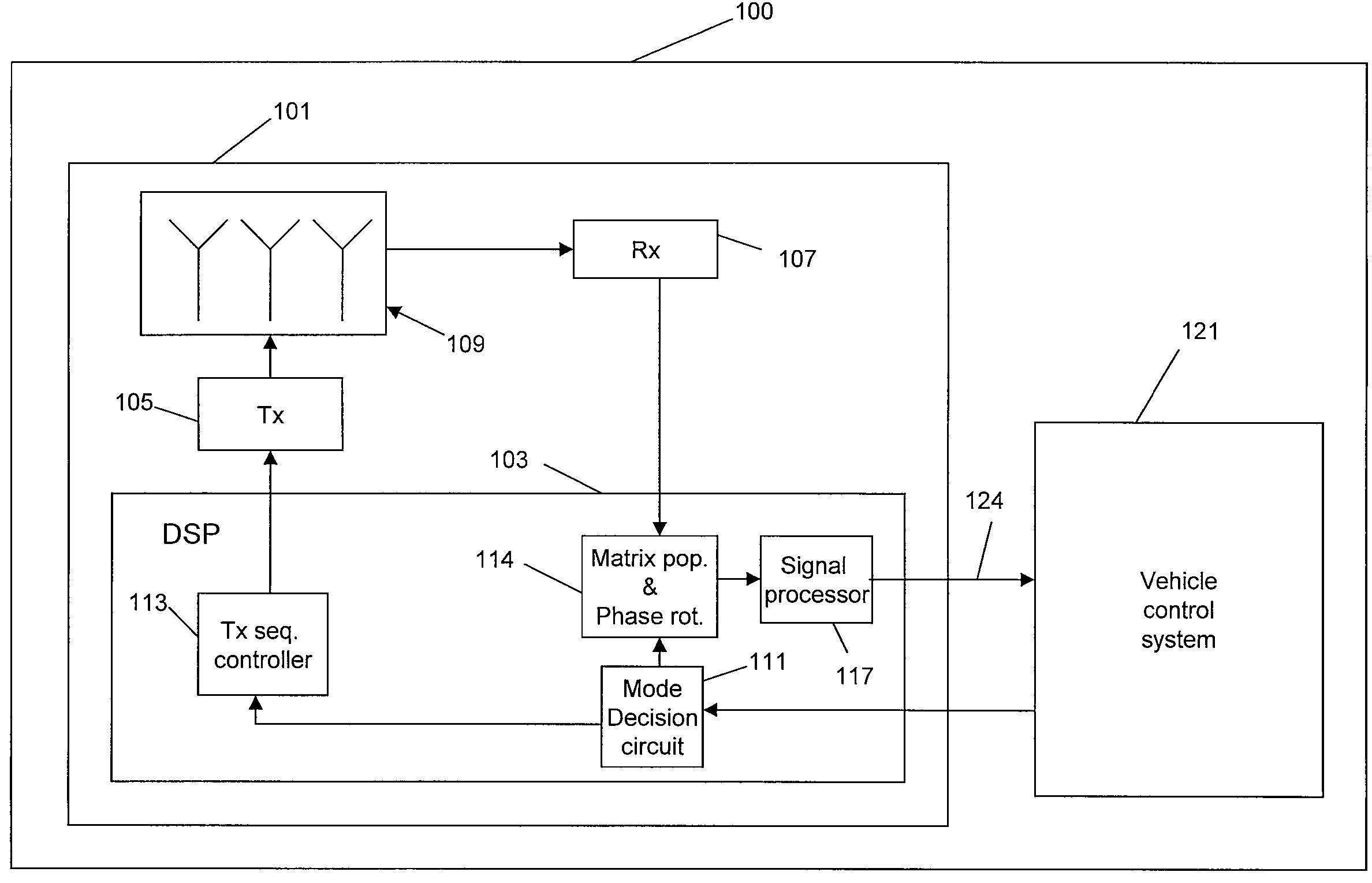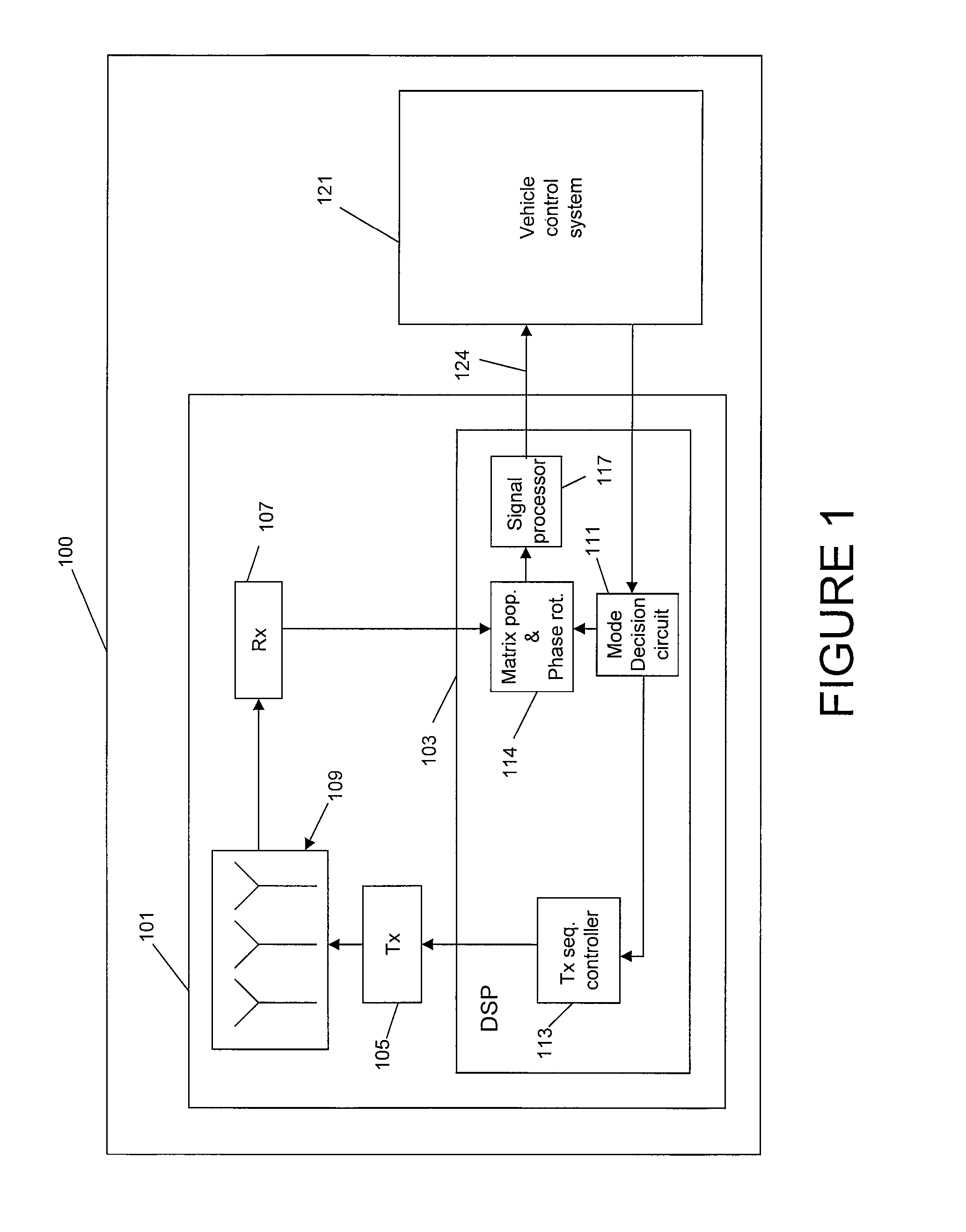Method and apparatus for radar signal processing
a radar signal and processing method technology, applied in the field of radar technology, can solve the problems of increasing the hardware consumption of pulsed radar systems, requiring relatively little processing power for pulsed radar systems, and the cost of hardware remains relatively steady
- Summary
- Abstract
- Description
- Claims
- Application Information
AI Technical Summary
Benefits of technology
Problems solved by technology
Method used
Image
Examples
Embodiment Construction
[0033]For sake of clarity, let us review some of the terminology utilized hereinabove. A “sample” is a single instance of the radar system transmitting a transmit signal of a given frequency and receiving the reflected return signal. A stepped frequency sweep is a plurality of samples taken at a plurality of different transmit signal frequencies over a defined frequency range in defined frequency steps. An up-chirped sequence is a plurality of stepped frequency sweeps in which each stepped frequency sweep has a higher frequency range than the preceding stepped frequency sweep. A down-chirped sequence is a plurality of stepped frequency sweeps in which each stepped frequency sweep has a lower frequency range than the preceding stepped frequency sweep. The information contained in a sample is the phase difference between the transmitted signal and the corresponding received signal. A “complete measurement set” refers to the plurality of samples that are processed collectively to provi...
PUM
 Login to View More
Login to View More Abstract
Description
Claims
Application Information
 Login to View More
Login to View More - R&D
- Intellectual Property
- Life Sciences
- Materials
- Tech Scout
- Unparalleled Data Quality
- Higher Quality Content
- 60% Fewer Hallucinations
Browse by: Latest US Patents, China's latest patents, Technical Efficacy Thesaurus, Application Domain, Technology Topic, Popular Technical Reports.
© 2025 PatSnap. All rights reserved.Legal|Privacy policy|Modern Slavery Act Transparency Statement|Sitemap|About US| Contact US: help@patsnap.com



